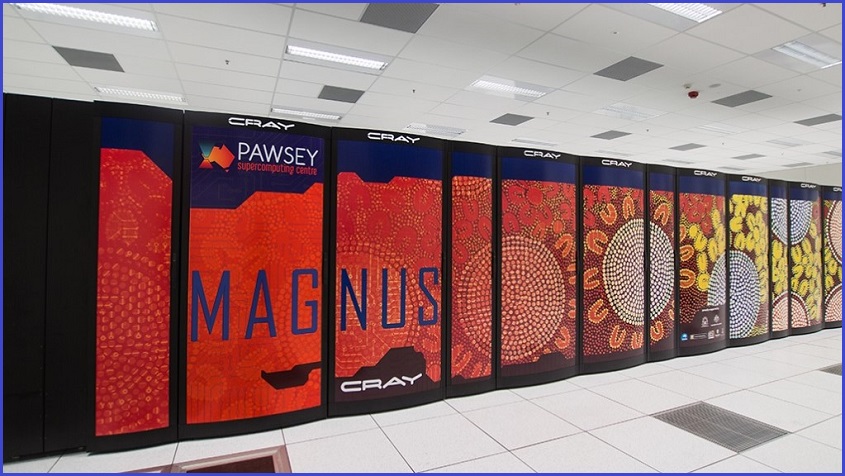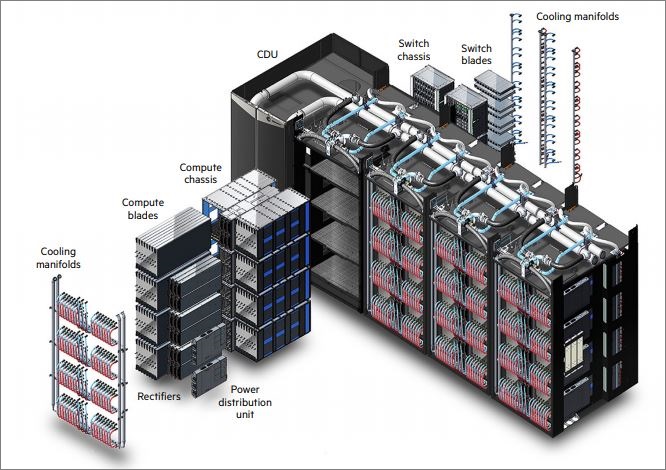The Pawsey Supercomputing Centre is building a new $48 million supercomputer system in a bid to become a world leader of research computing.
Drawing its 50 petaFLOPS from over 200,000 CPU cores, the new Hewlett Packard Enterprise (HPE) Cray EX is a massive upgrade over Pawsey’s existing Magnus and Galaxy supercomputers which had a combined compute power of less than two petaFLOPS.
Funding for the project is drawn from a $70 million grant the government awarded to upgrade the centre in 2018.
Executive Director at the Pawsey Supercomputing Centre, Mark Stickells, said access to computers was critical for local researchers.
“The upgrades we’re announcing are a critical move in strengthening Australia’s position in the global research environment and playing a part in major global research projects, from helping in the fight against COVID-19 to working with the precursor telescopes to the Square Kilometre Array,” he said in a statement.
“The new supercomputer will not only deliver next generation compute power to meet these growing requirements, it will enable entirely new research projects with global reach and impact.”
Assuming it hits the advertised 50 petaFLOPS, Pawsey’s HPE Cray EX supercomputer would be among the most powerful in the world – something the centre aimed to achieve when it began its search for a new machine last November.
Since June this year, the world’s fastest supercomputer is Japan’s Fugaku which has 7.2 million CPU cores and has a theoretical peak of 513 petaFLOPS.
Pawsey’s upgrade may not literally be the best in the world, but it is much more affordable than the $1.4 billion Fugaku supercomputer, and will still serve researchers like astrophysicist and CSIRO postdoctoral researcher Dr Chenoa Tremblay in good stead.
“We’re using Pawsey’s existing supercomputers to help scan more than ten million stars and analyse hundreds of terabytes of data to search for molecules that provide potential evidence of extraterrestrial life,” Dr Tremblay said in a statement.
“Doing this on my laptop would take 25 years, so having the power of the new supercomputer will help bring our research timelines from years down to days, giving us the power we need to analyse hundreds of thousands of images quickly.”
Inside a cabinet of the HPE Cray EX supercomputer. Source: Hewlett Packard
Renting compute time on supercomputers is itself expensive, as CSIRO IT contractor found out when he was given a 15-month community sentence for using a networked supercomputer to mine cryptocurrency.
At the cost of at least $76,000 in compute time, the contractor mined less than $10,000 in Monero and Ethereum.
Pawsey’s new supercomputer will be developed in two phases beginning with a migration over to the first two cabinets, expected to be complete by the end of next year, before the remaining six computer cabinets are brought in.
It has been less than 10 years since Pawsey commissioned its existing pair of Cray supercomputers.
Since September last year, supercomputer manufacturer Cray Inc has been part of Hewlett Packard after the company bought Cray for around $1.8 billion.
The Pawsey Supercomputing Centre was declared a Centre of Expertise in High Performance Computing by the Australian Computer Society in 2010.











